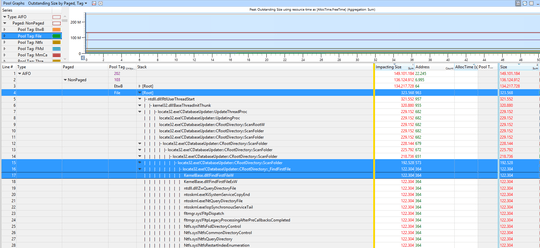2
1
In trying to determine what was causing the 'system' process to use up a large amount of RAM (which I found very unusual prior to updating to win10), I came across the post here: Windows 10 high memory usage (unknown reason)
Following those instructions, poolmon gives the following output:

This is problematic, as most drivers seem to use File - the output from findstr /s File *.sys has many entries.
I believe the second tag, wcdl, is tied to Intel's RST, which may or may not be contributing to the problem.
What can I do to further investigate / solve the issue?

Great help, thanks, seems to have been mostly due to FoxitReader in my case – enigma – 2015-10-25T19:27:21.873
To clarify: A "File" object represents the fact that a file (or a device) has been opened for access (it does not represent a read or a write operation to a file). The poolmon display here shows that almost a million file objects exist at one time. (Not necessarily that many files - a file can be opened several times at once, and a file object would exist for each.) This is likely indicates some truly sloppy programming by someone. It is usually possible to associate such usage with a process by adding the "Handles" column to Task Manager or Process Explorer's processes details display. – Jamie Hanrahan – 2015-10-27T23:14:45.810